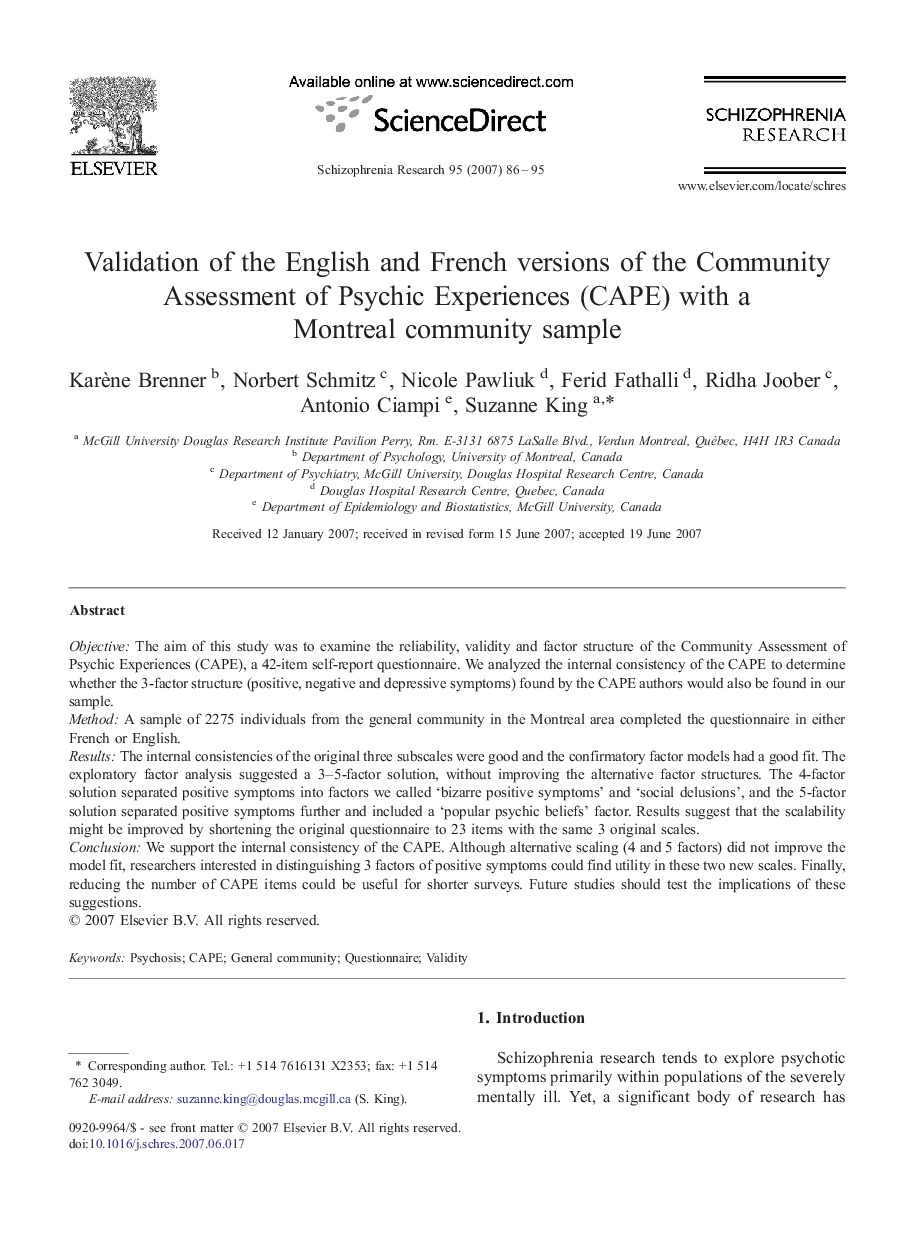| Article ID | Journal | Published Year | Pages | File Type |
|---|---|---|---|---|
| 340105 | Schizophrenia Research | 2007 | 10 Pages |
ObjectiveThe aim of this study was to examine the reliability, validity and factor structure of the Community Assessment of Psychic Experiences (CAPE), a 42-item self-report questionnaire. We analyzed the internal consistency of the CAPE to determine whether the 3-factor structure (positive, negative and depressive symptoms) found by the CAPE authors would also be found in our sample.MethodA sample of 2275 individuals from the general community in the Montreal area completed the questionnaire in either French or English.ResultsThe internal consistencies of the original three subscales were good and the confirmatory factor models had a good fit. The exploratory factor analysis suggested a 3–5-factor solution, without improving the alternative factor structures. The 4-factor solution separated positive symptoms into factors we called ‘bizarre positive symptoms’ and ‘social delusions’, and the 5-factor solution separated positive symptoms further and included a ‘popular psychic beliefs’ factor. Results suggest that the scalability might be improved by shortening the original questionnaire to 23 items with the same 3 original scales.ConclusionWe support the internal consistency of the CAPE. Although alternative scaling (4 and 5 factors) did not improve the model fit, researchers interested in distinguishing 3 factors of positive symptoms could find utility in these two new scales. Finally, reducing the number of CAPE items could be useful for shorter surveys. Future studies should test the implications of these suggestions.
